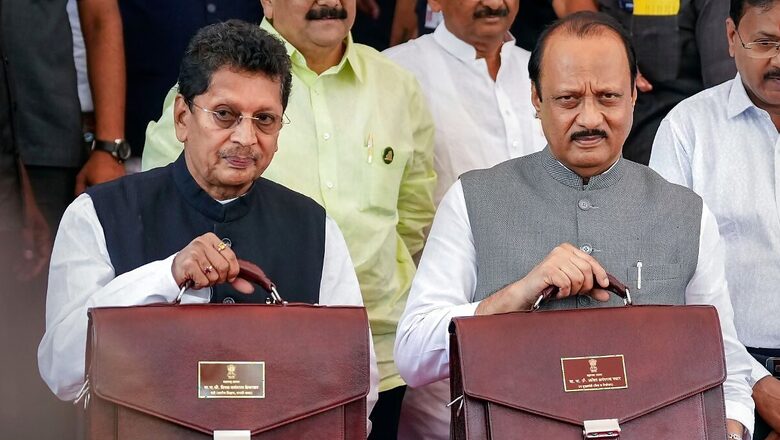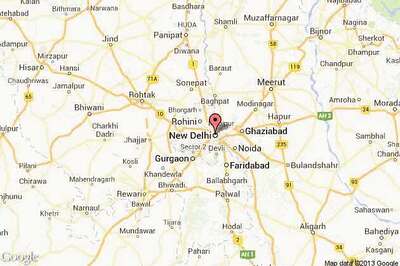
views
Maharashtra’s interim budget, presented by state finance minister Ajit Pawar, has stressed more on infrastructure development ahead of the Lok Sabha elections. After the launch of the ‘Atal Setu’, India’s longest sea bridge, the government is now focusing on the 11-km Mumbai Coastal Road that will help decongest traffic in South Mumbai and reduce travel time by 70 percent and fuel costs by 34 percent.
The state government is also focusing on the Versova-Bandra Sea Link, as the work for it is in full swing. This bridge will also be extended to Palghar for better connectivity. The existing freeway, which connects South Mumbai to the Gowandi area, will also be extended to Thane. Hence, commuting to Thane from Mumbai will be faster on this signal-free road.
Here is all you need to know:
- Rs 22,225 crore allocated for land acquisition of the Virar-Alibaug multimodal corridor, which will help the MIDC in Palghar district to connect with the JNPT port. This project will boost the industrial areas in Virar and Vasai, which are small but crowded cities in the Palghar district.
- Rs 10,519 crore allocated for the Pune ring road, announced by the Maha Vikas Aghadi government to reduce the traffic on the Pune-Bengaluru highway.
- Rs 2,866 crore for land acquisition for the Jalna-Nanded expressway. These two main city centres in the Marathwada region have emerged as industrial hubs. For Kinjan, three out of nine major bridges on the coastal highway between Rewas in Raigad district and Reddi in Sindhudurg district (south end of Konkan region) have got the administration’s nod and are at the tender stage.
- The Maharashtra State Infrastructure Development Corporation has been established to implement projects in 22 sectors such as roads, ports, airports, railways, metro and electricity. It will undertake roadworks of 7,500 km in length under the annuity scheme part 2.
- Rs 10,629 crore proposed under scheme expenditure for the urban development department and Rs 19,936 crore for the public works (roads) department for 2024-25.
- Rs 7,600 crore for upgrading roads, 7,000 km in length, in addition to 10,000 km in the second phase of the ‘Mukhya Mantri Gram Sadak Yojana’.
- Land acquisition for the first high-speed bullet train project (Mumbai-Ahmedabad) has been completed. Metro lines measuring 337 km in length will be built in the Mumbai Metropolitan Region (MMR), while 263 km have been sanctioned and 46.5 km have been commissioned. He added that 6 lakh passengers are taking advantage of this facility daily.
- Railway projects in Ahmednagar-Beed-Parli-Vaijyanath, Wardha-Yavtmal-Nanded, Vasda-Sedaiganj-Gadchiroli and Nagpur-Nagbhid are in progress with the financial participation of the state government.
- Land acquisition for new railway lines – Kalyan-Murbad, Pune-Nashik and Solapur-Tuljapur-Dharshiv – is in progress. The state government has given a nod to the proposal for sharing 50 percent of the project cost of the new railway lines Phaltan-Pandharpur, Kampa-Chimur-Varora, Jalna-Jalgaon and Nanded-Bodar.
- ‘Vadhvan’ port to be developed as a satellite port of JNPT to boost the state economy. The state government will start work on 50,000 sq ft terminal building of Shirdi airport. Rs 578.45 crore has been sanctioned for the expansion of Chhatrapati Sambhajinagar airport, while the state government has made a plan for land acquisition for Kolhapur airport.
Reacting to the budget, independent MLC Satyajeet Tambe said: “Budget allocation in terms of infrastructure is forward-looking. The projects are not limited to prime cities but also other cities and taluks, which is a welcome addition. These will help in providing impetus to multinational companies as well as small and micro enterprises. This paves the way for holistic development instead of concentrated progress. Projects passing through smaller talukas will also help decentralise and remove dependence on tier I cities.”
Leader of opposition Vijay Wadettiwar took a dig at Pawar, saying: “This interim budget gives false hopes to people, and doesn’t talk much about the agriculture sector and the infrastructure needed for it.”




















Comments
0 comment